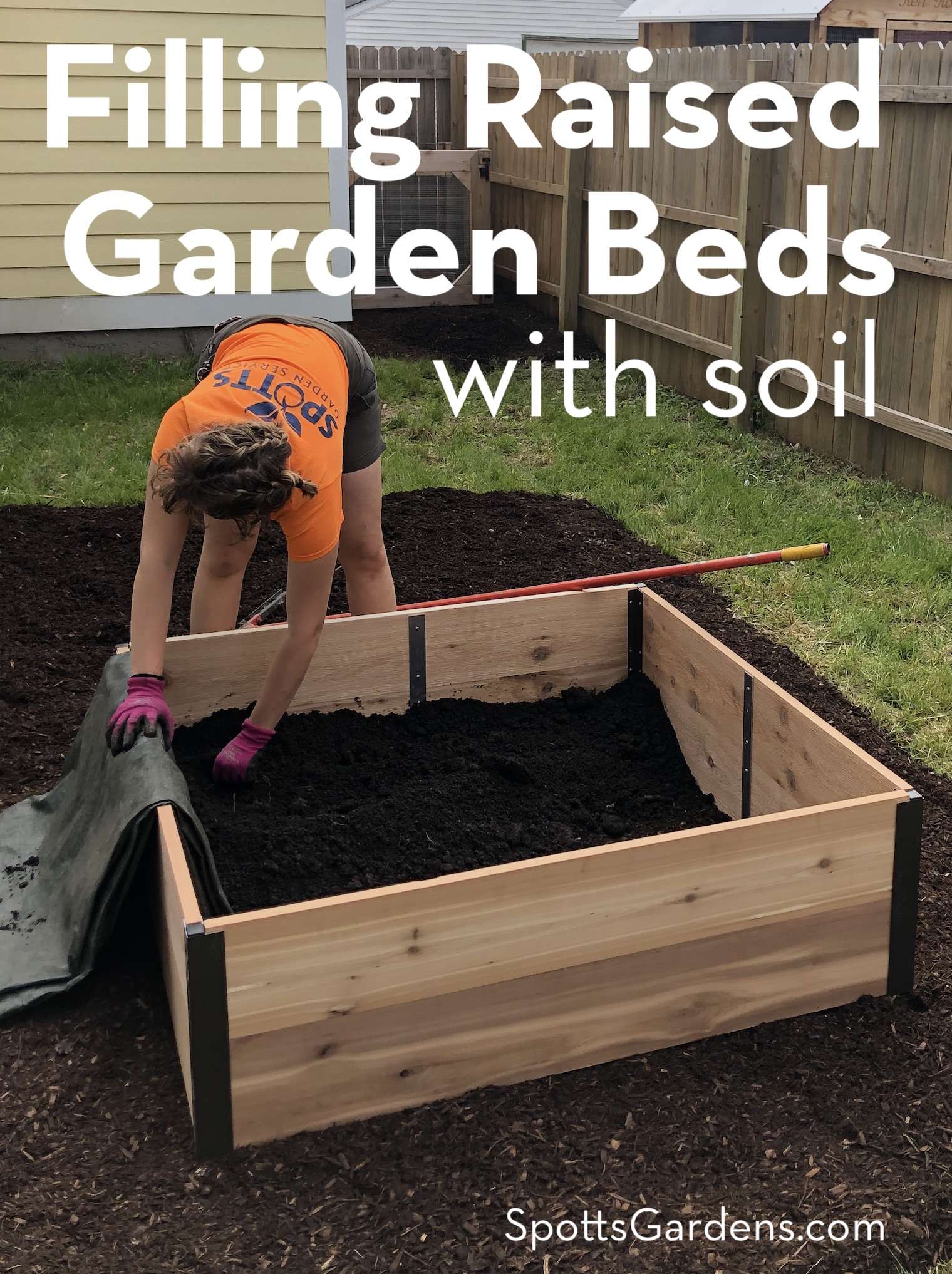Are you interested in off grid living and starting a raised bed garden? In this article, we will explore the importance of choosing the right soil for your raised bed garden. We’ll answer the question: do you need topsoil in a raised bed? By the end, you’ll have a clear understanding of how to select the best soil for your raised bed garden to ensure a thriving and productive garden. So let’s get started!
Choosing the Right Soil for a Raised Bed Garden
Introduction to Raised Bed Gardening
Raised bed gardening is a popular and efficient way of cultivating plants in a controlled and organized manner. By elevating the planting surface, raised beds offer numerous benefits such as improved drainage, better soil quality, and easier maintenance. To ensure the success of your raised bed garden, one of the most important factors to consider is choosing the right soil. In this article, we will explore the concept of raised bed gardening, the benefits it offers, and delve into the crucial role that soil plays in the growth and development of your plants. We will also discuss different types of soil suitable for raised beds, their advantages, and disadvantages, along with important considerations for soil selection and maintenance.
Understanding the Concept of a Raised Bed Garden
Before we delve into the importance of soil selection, it is essential to understand the concept of a raised bed garden. Raised beds are garden plots that are elevated above the ground level, typically constructed by building a frame or container and filling it with soil. The height of the raised bed can vary depending on personal preference and specific gardening needs. This gardening method offers several advantages over traditional in-ground planting, including enhanced soil structure, improved drainage, and easier access for planting, weeding, and harvesting.
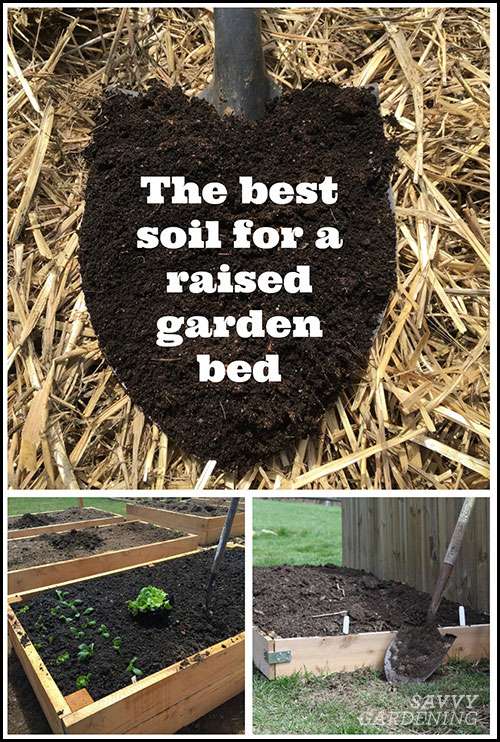
Benefits of Using Raised Beds for Gardening
Raised bed gardening provides countless benefits for gardeners of all experience levels. Firstly, the elevated nature of the beds allows for better control over soil composition and quality. This means that you can tailor the soil to meet the specific needs of your plants, ensuring optimal growth and productivity. Additionally, the confined space of raised beds helps to prevent soil compaction, which can hinder root development and nutrient uptake. Raised beds also offer improved drainage, preventing excess water retention and reducing the risk of root rot. Furthermore, the clearly defined boundaries of raised beds make it easier to control weeds and pests. Lastly, the elevated height of the beds allows for easier access, reducing strain on your back and knees during gardening tasks.
Impact of Soil on Plant Growth and Development
Soil plays a critical role in the growth and development of plants. It serves as a medium for root anchorage, nutrient storage, water retention, and air circulation. The type and quality of soil directly impact a plant’s ability to absorb essential nutrients and water, affecting its overall health and productivity. In raised bed gardening, where the soil is largely made up of the soil you choose, it becomes even more crucial to select the right type of soil to create an optimal growing environment for your plants.
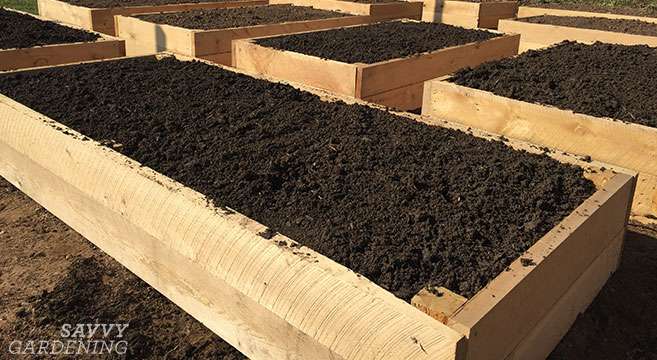
Specific Considerations for Raised Bed Gardening
While the general principles of soil selection for traditional gardening apply to raised bed gardening as well, there are certain specific considerations to keep in mind. One of the primary factors is ensuring adequate drainage. Raised beds tend to drain faster than traditional garden beds, so it is crucial to choose a soil mixture that allows water to flow freely without waterlogging the roots. Additionally, since raised beds are often built on top of existing soil, it is important to consider the nutrient content and structure of the underlying soil. By addressing these specific considerations, you can create an ideal soil environment for your raised bed garden.
Characteristics of Ideal Soil for Raised Bed Gardens
An ideal soil mixture for raised bed gardening should possess several key characteristics. Firstly, it should have adequate drainage and moisture retention. This means that the soil should allow excess water to drain away freely but retain enough moisture for the plants’ roots to access. Secondly, the soil should have good nutrient content, providing a steady supply of essential elements for plant growth. Lastly, the soil should have a loose and friable texture, allowing for easy root penetration and expansion. These characteristics provide a stable and nourishing environment for your plants to thrive.
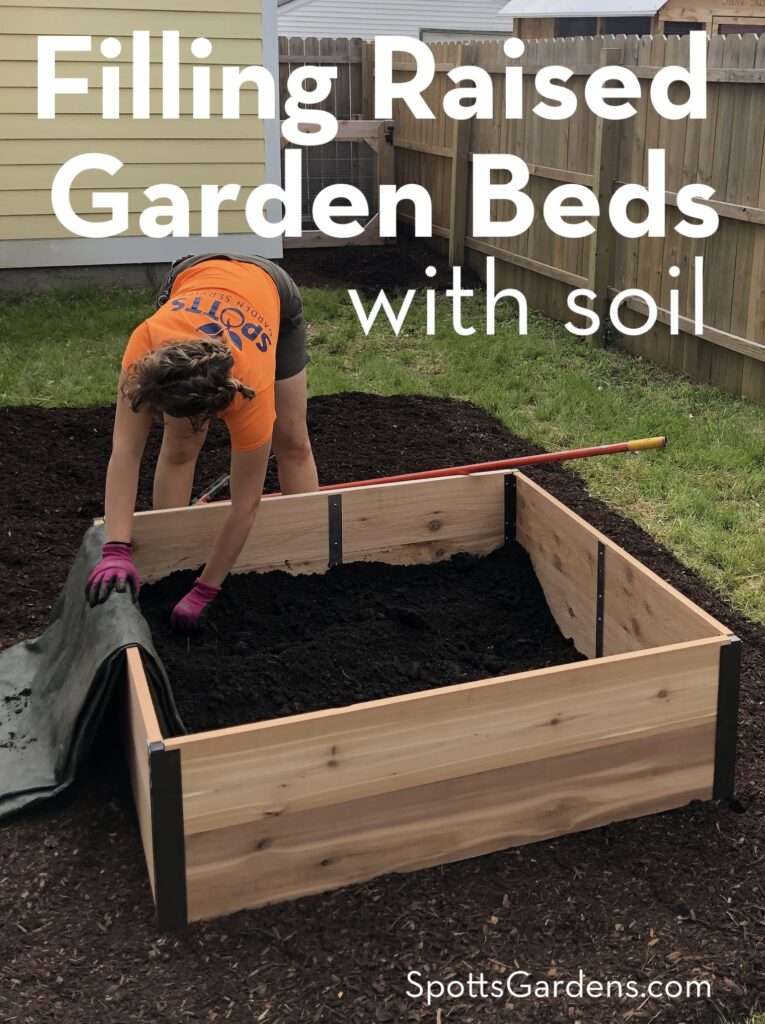
Different Types of Soil for Raised Bed Gardens
To create the ideal soil mixture for your raised bed garden, you may need to combine different types of soil. Some common types of soil used in raised bed gardening include topsoil, potting mix, compost, vermiculite, and coir. Each of these soil components brings unique qualities and benefits to the mix, contributing to the overall success of your raised bed garden.
Topsoil
Topsoil is the uppermost layer of soil, rich in organic matter and essential nutrients. It is an excellent choice for raised bed gardens as it provides a solid foundation for plant growth. Topsoil offers good drainage and moisture retention abilities, allowing for a healthy root environment. However, it is important to ensure the quality and composition of the topsoil to avoid potential issues, such as compaction or nutrient deficiency.
Potting Mix
Potting mix is specially formulated for container gardening and is an ideal choice for raised beds. It is a lightweight and well-draining soil medium that contains a blend of various organic materials, such as peat moss, perlite, and compost. Potting mix is typically low in nutrients, making it perfect for adding amendments and controlling the nutrient content according to specific plant requirements.
Compost
Compost is a nutrient-rich organic material that plays a vital role in soil enrichment and fertility. It is made up of decomposed plant matter, such as leaves, grass clippings, and kitchen scraps. Utilizing compost in raised bed gardening helps improve soil structure, enhances nutrient availability, and encourages beneficial microorganisms. Adding compost to your soil mixture provides a sustainable and environmentally friendly option for nourishing your plants.
Vermiculite
Vermiculite is a lightweight mineral that improves soil drainage while retaining moisture. It has excellent water-holding capacity, preventing soil from drying out too quickly. Vermiculite also aids in root aeration and helps the soil retain essential nutrients. To achieve optimal results, vermiculite should be added in appropriate proportions as excessive use can hinder drainage and create waterlogging issues.
Coir
Coir is a natural fiber extracted from coconut husks, commonly used as a soil additive in raised bed gardening. It is a renewable and sustainable option that improves soil structure, water retention, and nutrient availability. Coir also helps reduce soil compaction, making it easier for roots to penetrate the soil and access nutrients. It is an excellent alternative to peat moss, as it is more environmentally friendly and helps conserve wetlands.
Advantages and Disadvantages of Topsoil in Raised Beds
Topsoil is widely used in raised bed gardening due to its nutrient-rich composition and suitability for plant growth. However, it is important to consider both the advantages and disadvantages of using topsoil in raised beds.
Pros of Using Topsoil in Raised Bed Gardening
- Nutrient-rich: Topsoil contains essential nutrients necessary for plant growth.
- Good drainage: When used in appropriate proportions, topsoil provides adequate drainage for your plants.
- Enhances soil structure: The organic matter in topsoil improves soil structure and promotes root development.
- Supports beneficial microorganisms: Topsoil is teeming with beneficial bacteria and fungi that aid in nutrient cycling and organic matter decomposition.
Cons of Using Topsoil in Raised Bed Gardening
- Potential compaction: If not properly amended, topsoil can become compacted, hindering root growth and nutrient absorption.
- Nutrient imbalance: Depending solely on topsoil can lead to a nutrient imbalance, as different plants have varying nutrient requirements.
- Weed seeds and pathogens: Topsoil may contain weed seeds or harmful pathogens, which can affect plant growth and become a nuisance in your raised bed garden.
Despite the potential disadvantages, topsoil can be a valuable component of your raised bed garden soil mixture, provided proper precautions and amendments are made to address its limitations.
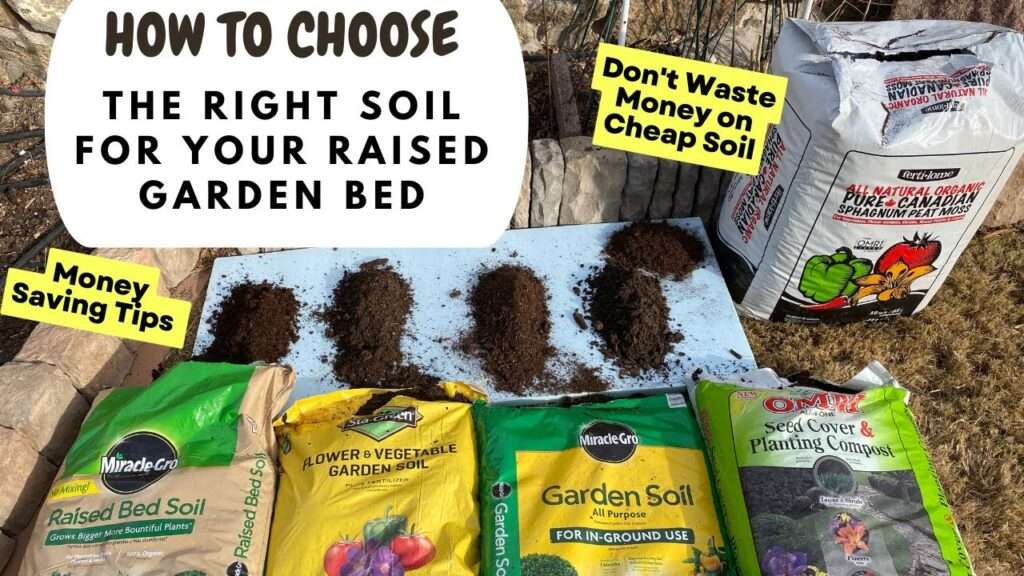
Benefits of Using Potting Mix in Raised Beds
Potting mix is a popular choice for raised bed gardening due to its lightweight and well-draining properties. Here are some reasons why using potting mix in raised beds can benefit your plants.
Overview of Potting Mix
Potting mix, also known as container mix or container soil, is specially formulated for use in containers or raised beds. It typically contains a blend of organic materials, such as peat moss, perlite, vermiculite, and compost, along with added nutrients. Potting mix is specifically designed to provide the ideal balance of moisture retention, drainage, and nutrient availability required for container or raised bed gardening.
Reasons Why Potting Mix is Suitable for Raised Bed Gardens
- Excellent drainage: The lightweight composition of potting mix ensures good drainage, preventing water from pooling in the raised bed and causing root rot.
- Moisture retention: Potting mix retains moisture well without becoming waterlogged, allowing roots to access water as needed.
- Enhanced root growth: The loose texture of potting mix allows roots to penetrate and spread easily, leading to healthier and more extensive root systems.
- Customizable nutrient content: Potting mix can be amended with additional organic fertilizers or slow-release nutrients to cater to the specific needs of different plants.
- Reduced weed growth: Potting mix is typically weed-free, reducing the competition for nutrients and providing a cleaner gardening experience.
- Disease prevention: Using sterile potting mix can help prevent the introduction of soil-borne diseases or pests into your raised bed garden.
By incorporating potting mix into your raised bed garden, you can create an environment that maximizes plant growth and minimizes potential issues.
Utilizing Compost in Raised Bed Gardening
Compost is a valuable addition to soil in raised bed gardening. Let’s explore the role of compost in soil enrichment and methods for incorporating it into your raised beds.
Understanding the Role of Compost in Soil Enrichment
Compost is often referred to as “black gold” for gardeners due to its rich nutrient content and ability to improve soil fertility. When added to the soil, compost enriches the nutrient content, improves soil structure, enhances water retention, and promotes beneficial microbial activity. Compost supplies a wide range of essential nutrients, including nitrogen, phosphorus, potassium, and micronutrients, which are crucial for plant growth and development. Its organic matter content helps increase the soil’s water-holding capacity, preventing excessive drainage and ensuring adequate moisture for the plants. Additionally, compost contains beneficial microorganisms that aid in breaking down organic matter, improving nutrient availability, and enhancing soil health.
Methods of Incorporating Compost into Raised Beds
There are several methods for incorporating compost into your raised beds to optimize the benefits it provides:
- Mixing: The simplest method is to mix the compost directly into the existing soil in your raised bed. This ensures the nutrients and organic matter are evenly distributed throughout.
- Layering: Another method is to create layers of compost and soil in your raised bed. Start with a layer of compost, followed by a layer of soil, and continue alternating until the bed is complete. This method allows for gradual nutrient release as the compost decomposes.
- Trenching: Trenching involves digging a trench in the raised bed and filling it with compost, then covering it with soil. This method provides a concentrated source of nutrients for plants with deeper root systems.
- Top-dressing: Top-dressing your raised bed with compost involves spreading a layer of compost on the surface of the bed without mixing it into the soil. This method gradually releases nutrients as it breaks down and helps improve soil structure and water retention.
Choose the method that suits your gardening style and the specific needs of your plants. Regularly adding compost to your raised bed ensures a constant supply of nutrients and enhances the long-term health and productivity of your garden.
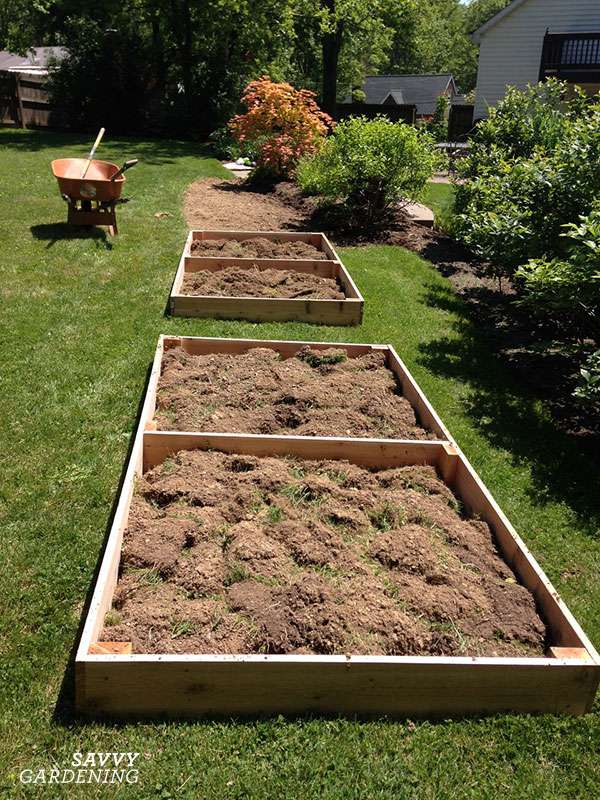
Vermiculite as a Soil Amendment for Raised Bed Gardens
Vermiculite is a natural mineral that can be used as a soil amendment in raised bed gardening. Let’s explore what vermiculite is, how it benefits the soil, and how to incorporate it into your raised beds.
What Vermiculite is and How it Benefits the Soil
Vermiculite is a lightweight mineral with excellent water-holding capacity and a high cation exchange capacity. It is made from micaceous minerals that expand when heated, creating a fluffy and moisture-absorbing texture. Vermiculite helps improve soil drainage by preventing compaction and allowing excess water to drain out. At the same time, it retains moisture, ensuring that plants have access to water even in dry conditions. Vermiculite also improves aeration and root penetration, creating a favorable environment for healthy plant growth and development. Additionally, vermiculite has a neutral pH level, making it suitable for a wide range of plants.
Proper Usage and Proportion of Vermiculite in Raised Beds
To incorporate vermiculite into your raised bed garden, follow these steps:
- Calculate the proportion: Vermiculite is typically used in a 1:1 ratio with the soil or soil mix. Measure the volume of soil you plan to use in your raised bed and add an equal volume of vermiculite to achieve the desired proportion.
- Mix thoroughly: Combine the soil and vermiculite in a large container or wheelbarrow and mix them thoroughly to ensure an even distribution of vermiculite throughout the soil.
- Apply to the raised bed: Transfer the soil-vermiculite mixture to your raised bed, ensuring it is spread evenly to create a consistent growing medium.
- Planting and maintenance: Proceed with planting your desired plants, ensuring proper spacing and depth. Water the raised bed regularly, as vermiculite helps retain moisture, reducing the frequency of irrigation.
By incorporating vermiculite into your raised bed soil mixture, you can improve its water-holding capacity and aeration, creating an optimal environment for plant growth.
Importance of Coir in Raised Bed Gardens
Coir, a natural fiber derived from coconut husks, serves as an excellent soil additive for raised bed gardens. Let’s explore the role of coir in raised bed gardening and the advantages it offers.
Introduction to Coir as a Soil Additive
Coir is a byproduct of the coconut industry and has gained popularity as a sustainable alternative to peat moss. It is a renewable and environmentally friendly material that offers multiple benefits to the soil. Coir has an exceptional water-holding capacity, allowing it to retain moisture for plant roots to access. It also promotes aeration and improves soil structure, preventing compaction and enhancing root penetration. Coir is rich in potassium, an essential nutrient for plant growth, and contains beneficial microorganisms that contribute to soil health.
Advantages of Using Coir in Raised Bed Gardening
Incorporating coir into your raised bed soil mixture offers several advantages:
- Enhanced water retention: Coir acts as a sponge, absorbing and holding moisture, reducing the frequency of irrigation.
- Improved drainage: Coir helps improve soil drainage by preventing excess water accumulation, reducing the risk of root rot.
- Sustainable option: Coir is an environmentally friendly alternative to peat moss, as it is a renewable resource that does not contribute to wetland destruction.
- Lightweight and easy to handle: Coir is lightweight and easy to work with, making it convenient for filling raised beds and mixing with other soil components.
- Weed suppression: Coir acts as a natural weed deterrent, reducing the need for frequent weeding and minimizing competition for nutrients.
- Cost-effective: Coir is widely available and cost-effective compared to other soil amendments, offering a budget-friendly option for raised bed gardeners.
By adding coir to your raised bed garden soil, you can promote healthy root growth, improve water retention, and create a sustainable and environmentally friendly growing environment for your plants.
Factors to Consider in Soil Selection
When selecting soil for your raised bed garden, it is important to consider a few factors to ensure optimal plant growth. Consider the following:
Plant Requirements and Preferences
Different plants have varying nutrient requirements, pH preferences, and drainage needs. Conduct research or consult plant-specific resources to understand the soil composition that best suits your chosen plants. Some plants may prefer more acidic soil, while others thrive in neutral or alkaline conditions. Tailoring the soil to meet the specific needs of your plants allows them to access the necessary nutrients for healthy growth and productivity.
Climate and Environmental Factors
Consider the climate and environmental conditions of your region when choosing soil for your raised beds. Factors such as rainfall, temperature variations, and sunlight exposure can influence soil moisture levels, nutrient availability, and overall plant health. For example, in arid regions with high evaporation rates, incorporating moisture-retaining components, such as vermiculite or coir, can help counteract drought conditions and ensure adequate water supply for your plants.
By considering these factors, you can select a soil mixture that creates an optimal growing environment, supporting the specific needs and preferences of the plants in your raised bed garden.
Testing and Amending Soil for Raised Beds
Soil testing and amendment are crucial steps in ensuring the optimal composition and nutrient content of your raised bed soil. Let’s explore methods for soil testing and how to address any deficiencies.
Methods for Soil Testing
There are several methods for testing the composition and fertility of your raised bed soil:
- DIY soil test kits: These kits are readily available and provide a simple and quick way to test pH levels, nutrient content, and the presence of harmful elements in your soil. Follow the instructions provided in the kit to perform the tests accurately.
- Laboratory testing: For a more comprehensive analysis of your soil, you can send a soil sample to a professional laboratory. They will provide detailed information about the nutrient content, pH levels, and any additional amendments required.
- Extension services: Local agricultural extension offices often offer soil testing services at a nominal fee. They can advise you on the appropriate tests to perform and provide recommendations based on the results.
Regular soil testing ensures that you are aware of the nutrient composition of your raised bed soil and can make informed amendments to support healthy plant growth.
How to Amend Soil Deficiencies
If your soil test indicates deficiencies or imbalances in essential nutrients, pH levels, or other factors, you can amend the soil with appropriate additives:
- Nutrient deficiencies: Add organic fertilizers or specific nutrient supplements to address any deficiencies identified in the soil test. Follow the recommended application rates and proper timing to avoid overfertilization.
- pH adjustments: If your pH level is too acidic or alkaline for the plants you intend to grow, amend the soil accordingly. Adjustments can be made by adding lime to raise pH or sulfur to lower it. Follow the recommended rates based on the soil test results.
- Organic matter: If your soil lacks organic matter, incorporate compost, well-rotted manure, or other organic materials to improve soil structure and fertility.
- Texture adjustment: Depending on the soil composition, you may need to add materials such as sand or clay to improve soil texture and drainage.
Amending the soil based on its specific deficiencies ensures that your raised bed garden has a balanced and nutritious growing medium, supporting the health and productivity of your plants.
Preparing the Raised Bed for Planting
Once you have chosen the right soil mixture for your raised bed garden, it is time to prepare the bed for planting. Follow these steps to ensure a conducive environment for your plants:
Clearing and Leveling the Site
Start by clearing the raised bed site of any debris, weeds, or vegetation. Remove any rocks or large obstacles that may interfere with the construction or planting process. Level the site to ensure an even surface for the raised bed.
Creating Suitable Boundaries and Structures
If your raised bed is not already constructed, begin by assembling the appropriate structure. This can be in the form of wooden planks, cinder blocks, or any other durable material that can contain the soil and support the weight of the plants. Ensure that the bed is level, sturdy, and of the desired dimensions. Consider adding a protective barrier, such as hardware cloth, to prevent burrowing pests from accessing the raised bed.
Planting and Maintaining a Raised Bed Garden
After preparing the raised bed, it is time to plant and maintain your garden. Follow these guidelines for successful raised bed gardening:
Proper Spacing and Arrangement of Plants
Ensure that you space your plants appropriately to allow for optimum growth and prevent overcrowding. Refer to plant-specific guidelines regarding spacing requirements for each variety. Arrange plants strategically to ensure compatibility and accessibility for maintenance tasks such as pruning and harvesting.
Watering, Fertilizing, and Weeding Techniques
Regular watering is crucial for raised bed gardens as the elevated nature of the beds can cause faster evaporation. Water deeply and consistently, ensuring the entire root zone is adequately hydrated. Monitor the moisture levels and adjust your watering frequency based on weather conditions. Apply organic fertilizers or slow-release amendments according to the specific nutrient requirements of your plants. Weeding is essential to maintain a clean and thriving garden. Regularly inspect your raised bed for weeds, gently pulling them out to prevent competition for nutrients.
Conclusion
Choosing the right soil is paramount for the success of your raised bed garden. The ideal soil mixture should provide adequate drainage, nutrient content, and a loose texture that supports optimal root growth and plant development. Consider the specific requirements of your plants, the climate of your region, and conduct soil testing to ensure proper soil composition and fertility. By utilizing different soil components such as topsoil, potting mix, compost, vermiculite, and coir, you can create a soil mix customized to the needs of your raised bed garden. Regular soil testing, amendments, and proper maintenance techniques will ensure a thriving garden and bountiful harvests year after year. Happy gardening!

